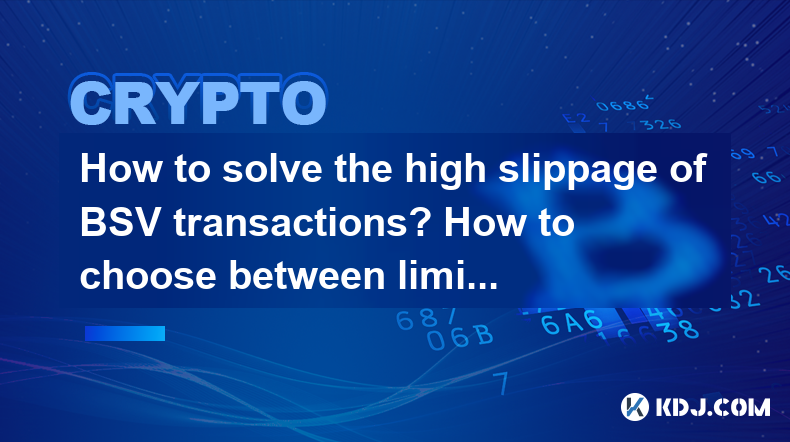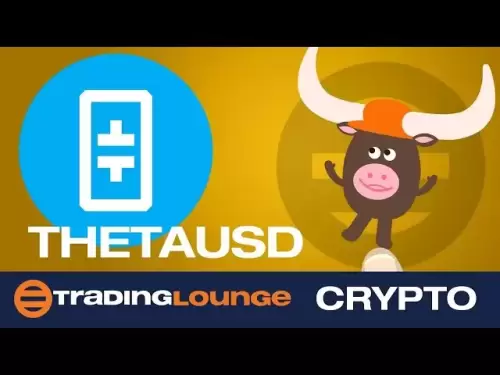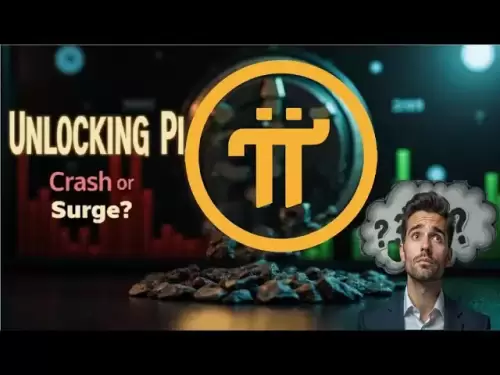-
 Bitcoin
Bitcoin $105,734.0170
-1.51% -
 Ethereum
Ethereum $2,414.7328
-3.26% -
 Tether USDt
Tether USDt $1.0002
0.00% -
 XRP
XRP $2.1748
-2.62% -
 BNB
BNB $647.5663
-1.72% -
 Solana
Solana $148.1710
-3.81% -
 USDC
USDC $0.9999
-0.01% -
 TRON
TRON $0.2799
-0.02% -
 Dogecoin
Dogecoin $0.1586
-4.17% -
 Cardano
Cardano $0.5440
-5.03% -
 Hyperliquid
Hyperliquid $37.0680
-6.59% -
 Bitcoin Cash
Bitcoin Cash $501.2052
-4.01% -
 Sui
Sui $2.6846
-3.47% -
 Chainlink
Chainlink $12.8488
-3.38% -
 UNUS SED LEO
UNUS SED LEO $8.9480
-1.51% -
 Avalanche
Avalanche $17.2059
-3.87% -
 Stellar
Stellar $0.2270
-4.75% -
 Toncoin
Toncoin $2.7889
-3.93% -
 Shiba Inu
Shiba Inu $0.0...01126
-1.76% -
 Litecoin
Litecoin $83.6893
-3.36% -
 Hedera
Hedera $0.1445
-4.49% -
 Monero
Monero $312.4014
-2.58% -
 Dai
Dai $1.0000
0.00% -
 Ethena USDe
Ethena USDe $1.0001
-0.01% -
 Polkadot
Polkadot $3.2920
-3.32% -
 Bitget Token
Bitget Token $4.4629
-1.81% -
 Uniswap
Uniswap $6.5386
-8.42% -
 Aave
Aave $260.3780
-6.01% -
 Pepe
Pepe $0.0...09308
-4.54% -
 Pi
Pi $0.4864
-3.04%
How to solve the high slippage of BSV transactions? How to choose between limit and market orders?
Slippage in BSV transactions can be mitigated by using limit orders, which allow traders to set specific prices, and assessing market liquidity before trading.
May 02, 2025 at 09:01 pm

High slippage can be a significant concern for traders dealing with Bitcoin SV (BSV) transactions. Slippage refers to the difference between the expected price of a trade and the price at which the trade is actually executed. This can occur in fast-moving markets or when there is low liquidity. To address this issue, understanding the mechanics of slippage and the tools available to mitigate it is crucial.
Understanding Slippage in BSV Transactions
Slippage in BSV transactions can be influenced by several factors. Market volatility is a primary cause, as rapid price changes can result in trades being executed at significantly different prices than anticipated. Liquidity also plays a vital role; if there are not enough buyers or sellers at a given price level, the trade may be executed at a less favorable price. Additionally, order size can affect slippage; larger orders are more likely to experience higher slippage due to the need to fill the order across multiple price levels.
To minimize slippage, traders need to be aware of these factors and use appropriate trading strategies. One effective approach is to use limit orders, which allow traders to specify the maximum price they are willing to pay or the minimum price they are willing to accept for a trade.
Using Limit Orders to Reduce Slippage
Limit orders are a powerful tool for managing slippage. Unlike market orders, which execute at the best available price at the time of the order, limit orders only execute at the specified price or better. This means that if the market moves away from your desired price, the order will not be filled, thereby avoiding unfavorable slippage.
To use a limit order effectively, follow these steps:
- Determine your target price: Based on your analysis, decide the price at which you want to buy or sell BSV.
- Place the limit order: On your trading platform, select the option to place a limit order, enter your target price, and specify the quantity of BSV you wish to trade.
- Monitor the order: Keep an eye on the order to see if it gets filled. If the market does not reach your specified price, the order will remain open until it does or until you cancel it.
By using limit orders, traders can have more control over the prices at which their trades are executed, thereby reducing the risk of high slippage.
When to Use Market Orders
While limit orders are effective for managing slippage, there are situations where market orders might be more appropriate. Market orders execute immediately at the best available price, making them suitable for traders who prioritize speed over price precision.
Market orders are particularly useful in the following scenarios:
- Highly liquid markets: In markets with high liquidity, the difference between the best bid and ask prices is minimal, reducing the risk of significant slippage.
- Fast-moving markets: If the price of BSV is moving rapidly and you need to enter or exit a position quickly, a market order can ensure that your trade is executed without delay.
- Small order sizes: For small trades, the impact on the market price is minimal, making market orders less susceptible to slippage.
However, market orders can still result in slippage, especially in less liquid markets or for larger trades. Therefore, it's essential to assess the market conditions before deciding to use a market order.
Choosing Between Limit and Market Orders
The choice between limit and market orders depends on your trading goals and the current market conditions. Here are some factors to consider when making this decision:
- Price sensitivity: If you are highly sensitive to the price at which your trade is executed, a limit order is the better choice. It allows you to set a specific price and avoid unfavorable slippage.
- Speed of execution: If you need to execute a trade quickly, a market order is more appropriate. It ensures immediate execution, albeit at the risk of slippage.
- Market liquidity: In highly liquid markets, market orders are less likely to result in significant slippage. In less liquid markets, limit orders can help you avoid unfavorable prices.
- Order size: Larger orders are more likely to experience slippage. In such cases, using a limit order can help you manage the price impact of your trade.
By considering these factors, you can make an informed decision on whether to use a limit or market order for your BSV transactions.
Advanced Strategies for Managing Slippage
In addition to using limit and market orders, there are advanced strategies that traders can employ to further manage slippage in BSV transactions. One such strategy is using stop orders, which can help protect against adverse price movements.
Stop orders come in two main types: stop-loss orders and stop-limit orders. A stop-loss order becomes a market order once the specified stop price is reached, ensuring immediate execution but at the risk of slippage. A stop-limit order, on the other hand, becomes a limit order once the stop price is reached, allowing you to specify the maximum price you are willing to pay or the minimum price you are willing to accept.
To use stop orders effectively, follow these steps:
- Determine your stop price: Based on your risk tolerance and market analysis, decide the price at which you want to trigger the stop order.
- Choose the type of stop order: Decide whether you want to use a stop-loss order for immediate execution or a stop-limit order for more control over the execution price.
- Place the stop order: On your trading platform, select the option to place a stop order, enter your stop price, and specify the quantity of BSV you wish to trade.
- Monitor the order: Keep an eye on the market to ensure that your stop order is triggered at the appropriate time.
By using stop orders in conjunction with limit and market orders, traders can develop a comprehensive strategy for managing slippage and protecting their investments.
FAQs
Q: Can I use both limit and market orders in the same trading strategy?
A: Yes, you can use both limit and market orders within the same trading strategy. For example, you might use a limit order to enter a position at a favorable price and then use a market order to exit the position quickly if the market moves against you.
Q: How can I assess the liquidity of the BSV market before placing an order?
A: To assess the liquidity of the BSV market, you can look at the order book on your trading platform. The order book displays the current buy and sell orders at various price levels. A deep order book with many orders at each price level indicates high liquidity, while a thin order book suggests low liquidity.
Q: What are some other factors that can affect slippage in BSV transactions?
A: In addition to market volatility, liquidity, and order size, other factors that can affect slippage include network congestion, trading platform fees, and the time of day (trading volumes can vary throughout the day). Being aware of these factors can help you better manage slippage in your BSV transactions.
Q: Can I adjust my limit order if the market conditions change?
A: Yes, you can adjust your limit order if the market conditions change. Most trading platforms allow you to modify the price and quantity of an existing limit order. Simply navigate to the open orders section, select the order you wish to modify, and update the parameters as needed.
Disclaimer:info@kdj.com
The information provided is not trading advice. kdj.com does not assume any responsibility for any investments made based on the information provided in this article. Cryptocurrencies are highly volatile and it is highly recommended that you invest with caution after thorough research!
If you believe that the content used on this website infringes your copyright, please contact us immediately (info@kdj.com) and we will delete it promptly.
- Robert Kiyosaki Still Bullish on Bitcoin: Why $107K is 'Cheap'
- 2025-07-02 20:30:12
- Aethir's Checker Node Licenses: Now Tradeable and Making Waves!
- 2025-07-02 20:30:12
- Instant Payments, Fintech, and USDC Stablecoins: A New Era of Finance?
- 2025-07-02 18:30:12
- XRP, Ripple Labs, and Escrow: Decoding the Latest Moves
- 2025-07-02 18:30:12
- Crypto Summit, White House, and Bitcoin Solaris: A New Era?
- 2025-07-02 18:50:12
- DeFi, Aptos, and Token Generation: A New Era?
- 2025-07-02 18:50:12
Related knowledge

How to customize USDT TRC20 mining fees? Flexible adjustment tutorial
Jun 13,2025 at 01:42am
Understanding USDT TRC20 Mining FeesMining fees on the TRON (TRC20) network are essential for processing transactions. Unlike Bitcoin or Ethereum, where miners directly validate transactions, TRON uses a delegated proof-of-stake (DPoS) mechanism. However, users still need to pay bandwidth and energy fees, which are collectively referred to as 'mining fe...

USDT TRC20 transaction is stuck? Solution summary
Jun 14,2025 at 11:15pm
Understanding USDT TRC20 TransactionsWhen users mention that a USDT TRC20 transaction is stuck, they typically refer to a situation where the transfer of Tether (USDT) on the TRON blockchain has not been confirmed for an extended period. This issue may arise due to various reasons such as network congestion, insufficient transaction fees, or wallet-rela...

How to cancel USDT TRC20 unconfirmed transactions? Operation guide
Jun 13,2025 at 11:01pm
Understanding USDT TRC20 Unconfirmed TransactionsWhen dealing with USDT TRC20 transactions, it’s crucial to understand what an unconfirmed transaction means. An unconfirmed transaction is one that has been broadcasted to the blockchain network but hasn’t yet been included in a block. This typically occurs due to low transaction fees or network congestio...

How to check USDT TRC20 balance? Introduction to multiple query methods
Jun 21,2025 at 02:42am
Understanding USDT TRC20 and Its ImportanceUSDT (Tether) is one of the most widely used stablecoins in the cryptocurrency market. It exists on multiple blockchain networks, including TRC20, which operates on the Tron (TRX) network. Checking your USDT TRC20 balance accurately is crucial for users who hold or transact with this asset. Whether you're sendi...

What to do if USDT TRC20 transfers are congested? Speed up trading skills
Jun 13,2025 at 09:56am
Understanding USDT TRC20 Transfer CongestionWhen transferring USDT TRC20, users may occasionally experience delays or congestion. This typically occurs due to network overload on the TRON blockchain, which hosts the TRC20 version of Tether. Unlike the ERC20 variant (which runs on Ethereum), TRC20 transactions are generally faster and cheaper, but during...

The relationship between USDT TRC20 and TRON chain: technical background analysis
Jun 12,2025 at 01:28pm
What is USDT TRC20?USDT TRC20 refers to the Tether (USDT) token issued on the TRON blockchain using the TRC-20 standard. Unlike the more commonly known ERC-20 version of USDT (which runs on Ethereum), the TRC-20 variant leverages the TRON network's infrastructure for faster and cheaper transactions. The emergence of this version came as part of Tether’s...

How to customize USDT TRC20 mining fees? Flexible adjustment tutorial
Jun 13,2025 at 01:42am
Understanding USDT TRC20 Mining FeesMining fees on the TRON (TRC20) network are essential for processing transactions. Unlike Bitcoin or Ethereum, where miners directly validate transactions, TRON uses a delegated proof-of-stake (DPoS) mechanism. However, users still need to pay bandwidth and energy fees, which are collectively referred to as 'mining fe...

USDT TRC20 transaction is stuck? Solution summary
Jun 14,2025 at 11:15pm
Understanding USDT TRC20 TransactionsWhen users mention that a USDT TRC20 transaction is stuck, they typically refer to a situation where the transfer of Tether (USDT) on the TRON blockchain has not been confirmed for an extended period. This issue may arise due to various reasons such as network congestion, insufficient transaction fees, or wallet-rela...

How to cancel USDT TRC20 unconfirmed transactions? Operation guide
Jun 13,2025 at 11:01pm
Understanding USDT TRC20 Unconfirmed TransactionsWhen dealing with USDT TRC20 transactions, it’s crucial to understand what an unconfirmed transaction means. An unconfirmed transaction is one that has been broadcasted to the blockchain network but hasn’t yet been included in a block. This typically occurs due to low transaction fees or network congestio...

How to check USDT TRC20 balance? Introduction to multiple query methods
Jun 21,2025 at 02:42am
Understanding USDT TRC20 and Its ImportanceUSDT (Tether) is one of the most widely used stablecoins in the cryptocurrency market. It exists on multiple blockchain networks, including TRC20, which operates on the Tron (TRX) network. Checking your USDT TRC20 balance accurately is crucial for users who hold or transact with this asset. Whether you're sendi...

What to do if USDT TRC20 transfers are congested? Speed up trading skills
Jun 13,2025 at 09:56am
Understanding USDT TRC20 Transfer CongestionWhen transferring USDT TRC20, users may occasionally experience delays or congestion. This typically occurs due to network overload on the TRON blockchain, which hosts the TRC20 version of Tether. Unlike the ERC20 variant (which runs on Ethereum), TRC20 transactions are generally faster and cheaper, but during...

The relationship between USDT TRC20 and TRON chain: technical background analysis
Jun 12,2025 at 01:28pm
What is USDT TRC20?USDT TRC20 refers to the Tether (USDT) token issued on the TRON blockchain using the TRC-20 standard. Unlike the more commonly known ERC-20 version of USDT (which runs on Ethereum), the TRC-20 variant leverages the TRON network's infrastructure for faster and cheaper transactions. The emergence of this version came as part of Tether’s...
See all articles

























































































